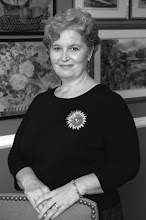
We all know you can’t always rely on information you find on the internet to be accurate, and this includes descriptions of dystonia and other movement disorders. To those of us who live with dystonia every day and who know the importance of promoting awareness, few things are more frustrating than a media story or online blog that disseminates incorrect information about this already frequently misunderstood disorder.
The DMRF applauds a recent letter to the editor in the New England Journal of Medicine that addresses this matter. Physicians are reporting that a growing number of individuals with movement disorders are coming to them with inaccurate portrayals of these disorders from the internet, especially from the video sharing website YouTube. These videos are causing many people undue concern by providing inaccurate depictions of movement disorders (including dystonia) and suggesting treatments and cures not backed by trustworthy sources.
The DMRF echoes the New England Journal of Medicine in reminding those of us with dystonia to seek out credible sources for medical information. We encourage you to verify the sources of information about treatment options and only rely on those backed by solid scientific study and endorsed by a qualified physician trained in movement disorders.
The DMRF will continue to take very seriously our efforts to provide our community with accurate, timely information about dystonia and the latest news in treatments and research—an effort we have undertaken for 35 years. The DMRF is privileged to work closely with the world’s top thought leaders in movement disorders to make sure the information we provide you is sound.
It’s unfortunate that there are people in the world who take advantage of a platform like YouTube, which can do so much good, and use it in a manner that is harmful. This does not in any way diminish the tireless work of our friends in the dystonia community who are promoting awareness—including through social media websites like YouTube and Facebook—and helping the un- and misdiagnosed access the information and resources they need. Now more than ever, we need to make sure individuals impacted with dystonia know where to go for good information.
Art Kessler
President





